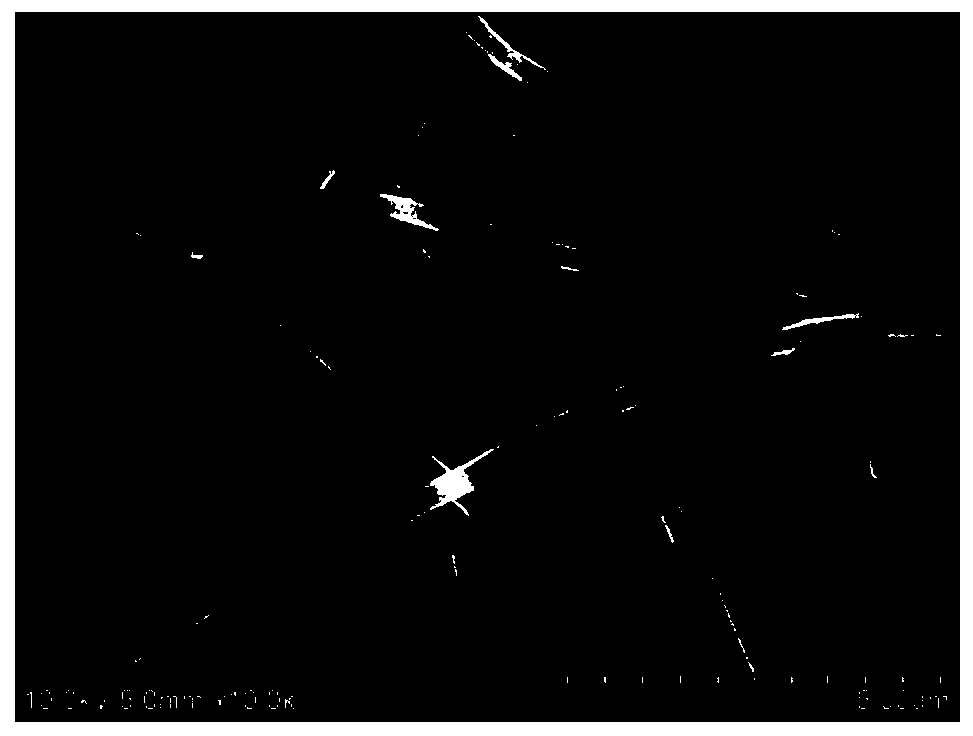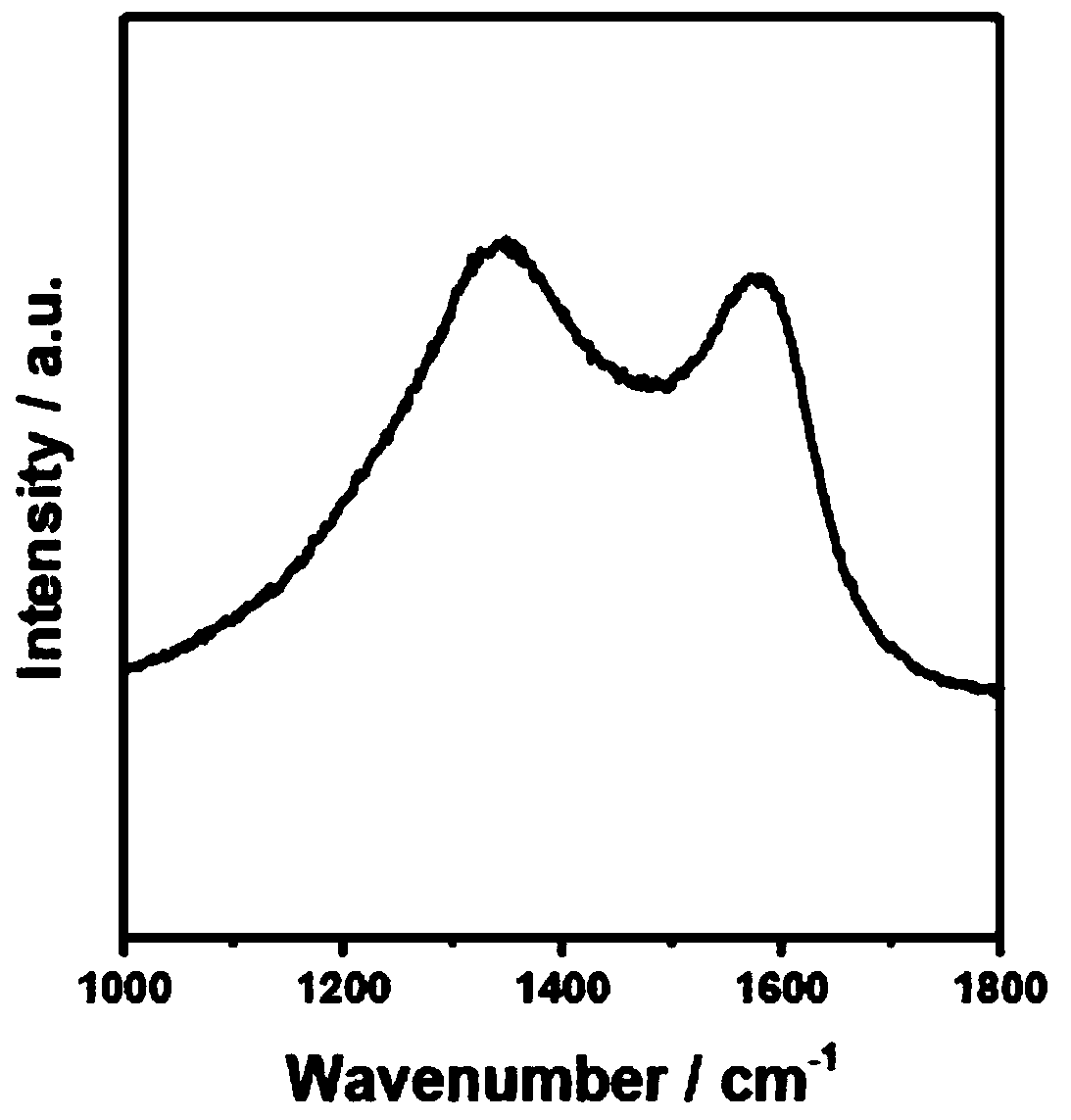Carbon composite material for secondary battery, preparation method thereof and application thereof
A carbon composite material and battery technology, applied in the direction of electrode carrier/current collector, etc., can solve the problems of low conductivity, inability to prevent graphite pulverization, low coulomb efficiency, etc., to improve energy density, avoid structural and performance shortcomings, improve The effect of comprehensive performance
- Summary
- Abstract
- Description
- Claims
- Application Information
AI Technical Summary
Problems solved by technology
Method used
Image
Examples
Embodiment 1
[0090] This example is used to illustrate the carbon composite material of the present invention and its preparation method and application.
[0091] 1. Preparation of carbon composite materials for lithium secondary batteries
[0092] 2g of polyacrylonitrile (PAN) was dissolved in 20mL of dimethylformamide (DMF), PAN was slowly added to DMF and stirred for 1 hour, and the uniformly dissolved solution was made into fibers using electrospinning technology, and then the spun The silk product was pre-fired in a muffle furnace at 280°C for 2 hours, and then fired in a tube furnace at 800°C for 6 hours under an argon (Ar) atmosphere. The resulting carbon composites are figure 1 shown.
[0093] Such as figure 2 As shown, the morphology of the prepared carbon composite is carbon fiber, and its specific surface area is 82.89m 2 / g, the pore size range is 10-500nm, and the porosity is 82%. Utilize Raman spectrum to test the carbon material that embodiment 1 obtains, the result is a...
Embodiment 2
[0103] This example is used to illustrate the carbon composite material of the present invention and its preparation method and application.
[0104] 1. Preparation of carbon composite materials for lithium secondary batteries
[0105] 1.8g PAN and 0.2g pitch were dissolved in 20mL DMF, PAN and pitch were slowly added to DMF and stirred for 1 hour, the uniformly dissolved solution was made into nanowires using electrospinning technology, and then the spinning product was Pre-fire in a Furnace at 280°C for 2 hours, then burn in a tube furnace at 800°C for 6 hours under an argon atmosphere, and use it after cooling to room temperature.
[0106] Such as Figure 5 As shown, the morphology of the prepared carbon composite material is carbon nanowires, and its specific surface area is 86.89m 2 / g, the pore size range is 5-500nm, and the porosity is 83%. Utilize Raman spectrometer to test the carbon material that embodiment 2 obtains, the result is as follows Figure 6 As shown, ...
Embodiment 3
[0111] This example is used to illustrate the carbon composite material of the present invention and its preparation method and use.
[0112] 1. Preparation of carbon composites for sodium secondary batteries
[0113] The gelatin and pitch were mechanically mixed at a mass ratio of 1:1, and the resulting mixture was pyrolyzed in a tube furnace at 800°C for 6 hours under an argon atmosphere, and a carbon composite material containing nitrogen was obtained after natural cooling.
[0114] Such as Figure 7 As shown, the morphology of the prepared carbon composite is porous carbon, and its specific surface area is 553.62m 2 / g, the pore size range is 1-100nm, and the porosity is 67%. Raman test results show that the obtained carbon material is a composite material of soft carbon and hard carbon, and photoelectron spectroscopy results show that the obtained carbon material is a nitrogen-rich carbon material.
[0115] 2. Preparation and electrochemical test of sodium secondary ba...
PUM
| Property | Measurement | Unit |
|---|---|---|
| Aperture | aaaaa | aaaaa |
| Specific surface area | aaaaa | aaaaa |
| Specific surface area | aaaaa | aaaaa |
Abstract
Description
Claims
Application Information
 Login to View More
Login to View More - R&D
- Intellectual Property
- Life Sciences
- Materials
- Tech Scout
- Unparalleled Data Quality
- Higher Quality Content
- 60% Fewer Hallucinations
Browse by: Latest US Patents, China's latest patents, Technical Efficacy Thesaurus, Application Domain, Technology Topic, Popular Technical Reports.
© 2025 PatSnap. All rights reserved.Legal|Privacy policy|Modern Slavery Act Transparency Statement|Sitemap|About US| Contact US: help@patsnap.com



